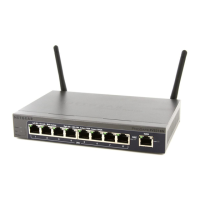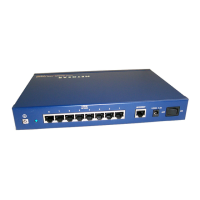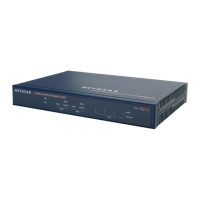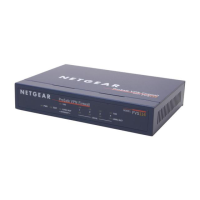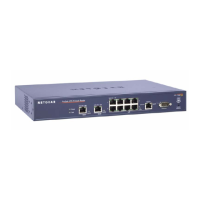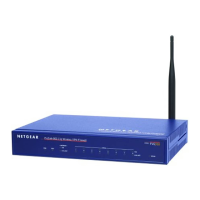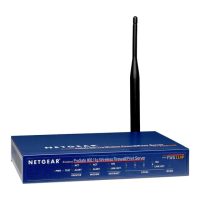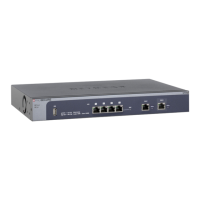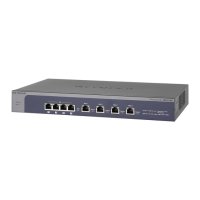Virtual Private Networking Using IPSec and L2TP Connections
247
NETGEAR ProSAFE VPN Firewall FVS318G v2
The Router Status screen displays. After five minutes of inactivity, which is the default
login time-out, you are automatically logged out.
2. Select VP
N
> IPSec VPN.
The IPSec VPN submenu tabs display with the IKE Policies scree
n for IPv4 in view.
3. Specify the IP version for which you want to edit an IKE policy:
• IPv4. In th
e upper right of the screen, the IPv4 radio button is already selected by
default. Go to Step 4.
• IPv6. Sele
ct the IPv6 radio button. The IKE Policies screen for IPv6 displays.
4. In the List of IKE Policies table, to the right of the IKE policy
that you want to edit, click the
Edit table button.
The Edit IKE Policy screen displays.
This screen shows the same fields as the Add IKE
Policy screen.
5. Modify the settings that you wish to change.
See T
able 51 on page 243.
6. Click the Ap
ply button.
Your changes are saved.
Manage VPN Policies
You can create two types of VPN policies:
• Manual. Y
ou manually enter all settings (including the keys) for the VPN tunnel on the
VPN firewall and on the remote VPN endpoint. No third-party server or organization is
involved.
• Auto. Some settings for the VPN tunnel are generated automatically thro
ugh the use of
the IKE (Internet Key Exchange) Protocol to perform negotiations between the two VPN
endpoints (the local ID endpoint and the remote ID endpoint). You still must manually
enter all settings on the remote VPN endpoint (unless the remote VPN endpoint also
includes a VPN Wizard).
When you use the VPN Wizard to create a VPN po
licy, only the Auto method is available.
In addition, a certification authority (CA) can also be used to perform au
thentication. For
more information, see Manage Digital Certificates for VPN Connections on p
age 308.
For gateways to use a CA to perform authentication, you need a certificate from
the CA for
each VPN gateway. Each certificate contains both a public key and a private key. The public
key is freely distributed and is used by any sender to encrypt data intended for the receiver
(the key owner). The receiver then uses its private key to decrypt the data (without the private
key, decryption is impossible). The use of certificates for authentication reduces the amount
of data entry that is required on each VPN endpoint.

